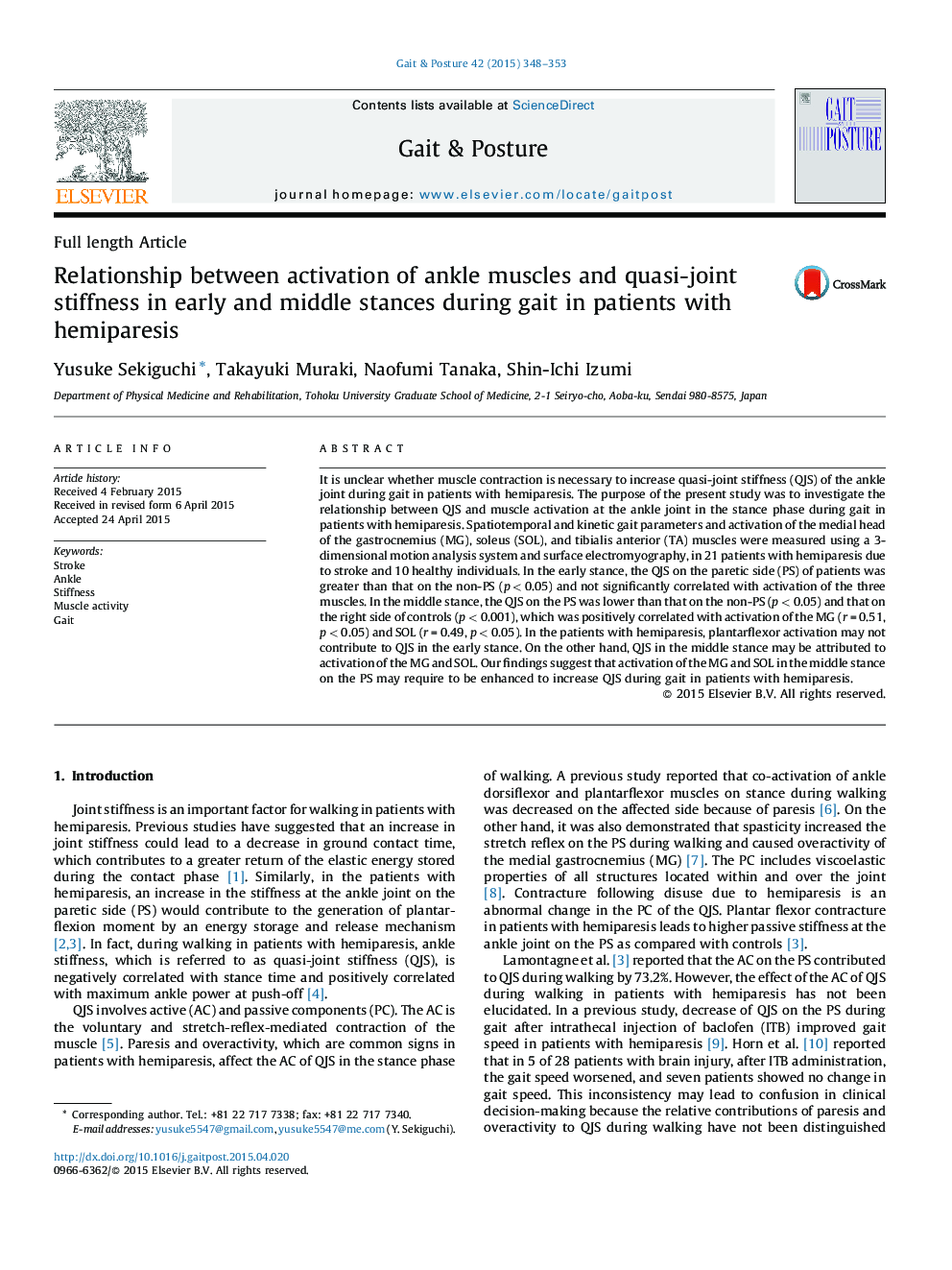| Article ID | Journal | Published Year | Pages | File Type |
|---|---|---|---|---|
| 6205584 | Gait & Posture | 2015 | 6 Pages |
â¢Relationship between muscle activations and the ankle joint stiffness during gait in patients with hemiplegia was examined.â¢The stiffness on the paretic side positively correlated with the plantarflexor activations in the middle stance.â¢Improving the activations may be necessary to increase the stiffness.
It is unclear whether muscle contraction is necessary to increase quasi-joint stiffness (QJS) of the ankle joint during gait in patients with hemiparesis. The purpose of the present study was to investigate the relationship between QJS and muscle activation at the ankle joint in the stance phase during gait in patients with hemiparesis. Spatiotemporal and kinetic gait parameters and activation of the medial head of the gastrocnemius (MG), soleus (SOL), and tibialis anterior (TA) muscles were measured using a 3-dimensional motion analysis system and surface electromyography, in 21 patients with hemiparesis due to stroke and 10 healthy individuals. In the early stance, the QJS on the paretic side (PS) of patients was greater than that on the non-PS (p < 0.05) and not significantly correlated with activation of the three muscles. In the middle stance, the QJS on the PS was lower than that on the non-PS (p < 0.05) and that on the right side of controls (p < 0.001), which was positively correlated with activation of the MG (r = 0.51, p < 0.05) and SOL (r = 0.49, p < 0.05). In the patients with hemiparesis, plantarflexor activation may not contribute to QJS in the early stance. On the other hand, QJS in the middle stance may be attributed to activation of the MG and SOL. Our findings suggest that activation of the MG and SOL in the middle stance on the PS may require to be enhanced to increase QJS during gait in patients with hemiparesis.
